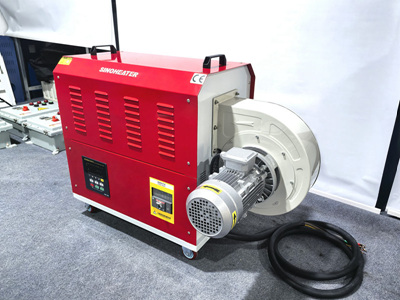How to Use a Heat Gun for Restoring Plastic Car Interior Components
Car interiors often suffer from faded, discolored, or brittle plastic parts due to prolonged exposure to sunlight, temperature fluctuations, and friction. Restoring these components not only enhances aesthetics but also extends their lifespan. A heat gun is a versatile tool for this task, capable of revitalizing plastic surfaces through controlled thermal application. Below is a detailed guide on using a heat gun safely and effectively for automotive plastic restoration.
Understanding the Role of Heat in Plastic Restoration
Plastic components in cars, such as dashboard trims, door panels, and center consoles, are typically made from materials like polypropylene (PP), polyethylene (PE), or thermoplastic elastomers (TPE). Over time, UV rays break down polymer chains, causing oxidation and surface whitening. Heat treatment works by temporarily softening the plastic’s outer layer, allowing trapped pigments to resurface and restoring its original color.
The Science Behind Thermal Restoration
When heated to specific temperatures (usually between 150°C to 250°C), plastic undergoes a process called “thermal rejuvenation.” This softens the oxidized surface layer, enabling it to bond with underlying material. The key is to apply heat evenly without overheating, which could cause warping, bubbling, or permanent deformation.
Step-by-Step Process for Heat Gun Restoration
1. Preparation: Cleaning and Protecting Surrounding Areas
Before applying heat, thoroughly clean the plastic surface using a mild automotive interior cleaner. Remove dust, grease, and old protectants with a microfiber cloth. For stubborn stains, a solution of isopropyl alcohol and water (1:1 ratio) can be used.
Important Precautions:
- Mask adjacent areas (e.g., leather, fabric, or painted surfaces) with aluminum foil or heat-resistant tape to prevent accidental damage.
- Ensure the workspace is well-ventilated to avoid inhaling fumes from heated plastic.
2. Adjusting the Heat Gun Settings
Most heat guns offer adjustable temperature and airflow settings. For plastic restoration:
- Temperature: Start at 150°C and gradually increase to 200°C if needed. Avoid exceeding 250°C, as this risks melting the plastic.
- Airflow: Use a low to medium setting to prevent blowing dust onto the surface.
Tip: Test the heat gun on an inconspicuous area (e.g., under the dashboard) to gauge the plastic’s response before proceeding.
3. Applying Heat Evenly
Hold the heat gun 5–10 cm away from the plastic surface and move it in slow, overlapping passes. Focus on one section at a time (e.g., a 10 cm × 10 cm area) to maintain control.
Signs of Progress:
- The plastic will darken slightly as the oxidized layer softens.
- A glossy sheen may appear, indicating restored pigmentation.
Avoid These Mistakes:
- Overheating: Stop if the plastic begins to sag, bubble, or emit a strong odor.
- Stationary Heating: Never keep the heat gun in one spot for more than 2–3 seconds.
4. Post-Heating Treatment
After heating, allow the plastic to cool naturally. For enhanced protection:
- Apply a UV-resistant plastic conditioner or silicone-based dressing to seal the surface and prevent future fading.
- Buff gently with a clean microfiber cloth to restore shine.
Advanced Techniques for Specific Issues
Restoring Deep Scratches or Gouges
For minor surface damage, combine heat treatment with fine-grit sanding (600–800 grit) after heating. This smooths rough edges and prepares the area for reapplication of color (if needed).
Rejuvenating Textured Plastic
Textured surfaces (e.g., grainy dashboard panels) require careful heat distribution. Use a diffuser attachment on the heat gun to soften the plastic evenly without flattening the texture.
Addressing Stubborn Discoloration
If heat alone doesn’t restore color, follow up with a plastic-safe dye or spray paint designed for automotive use. Apply thin coats and allow full drying between layers.
Safety First: Essential Precautions
- Eye Protection: Wear safety goggles to shield against flying debris or splatters.
- Fire Safety: Keep the heat gun away from flammable materials (e.g., upholstery, paper).
- Ventilation: Work outdoors or in a garage with open doors to disperse fumes.
By following these guidelines, a heat gun can transform dull, aged plastic into a like-new finish without costly replacements. Always prioritize patience and precision to achieve professional-grade results.




